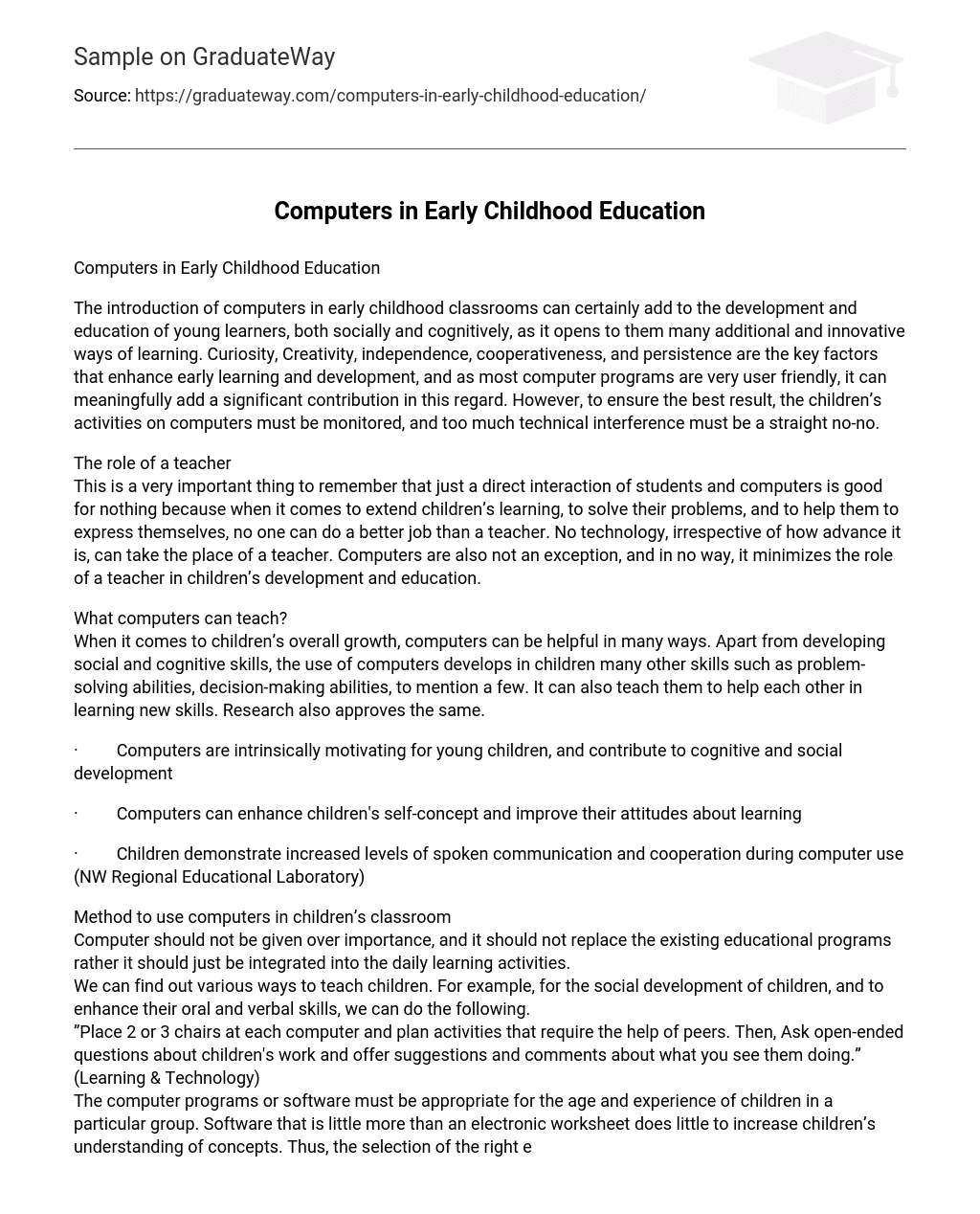The introduction of computers in early childhood classrooms can certainly add to the development and education of young learners, both socially and cognitively, as it opens to them many additional and innovative ways of learning. Curiosity, Creativity, independence, cooperativeness, and persistence are the key factors that enhance early learning and development, and as most computer programs are very user friendly, it can meaningfully add a significant contribution in this regard. However, to ensure the best result, the children’s activities on computers must be monitored, and too much technical interference must be a straight no-no.
The role of a teacher
This is a very important thing to remember that just a direct interaction of students and computers is good for nothing because when it comes to extend children’s learning, to solve their problems, and to help them to express themselves, no one can do a better job than a teacher. No technology, irrespective of how advance it is, can take the place of a teacher. Computers are also not an exception, and in no way, it minimizes the role of a teacher in children’s development and education.
What computers can teach?
When it comes to children’s overall growth, computers can be helpful in many ways. Apart from developing social and cognitive skills, the use of computers develops in children many other skills such as problem-solving abilities, decision-making abilities, to mention a few. It can also teach them to help each other in learning new skills. Research also approves the same.
· Computers are intrinsically motivating for young children, and contribute to cognitive and social development
· Computers can enhance children’s self-concept and improve their attitudes about learning
· Children demonstrate increased levels of spoken communication and cooperation during computer use
(NW Regional Educational Laboratory)
Method to use computers in children’s classroom
Computer should not be given over importance, and it should not replace the existing educational programs rather it should just be integrated into the daily learning activities.
We can find out various ways to teach children. For example, for the social development of children, and to enhance their oral and verbal skills, we can do the following.
”Place 2 or 3 chairs at each computer and plan activities that require the help of peers. Then, Ask open-ended questions about children’s work and offer suggestions and comments about what you see them doing.” (Learning & Technology)
The computer programs or software must be appropriate for the age and experience of children in a particular group. Software that is little more than an electronic worksheet does little to increase children’s understanding of concepts. Thus, the selection of the right educational software is very critical. The software must be developmentally appropriate, and it must fit on their interests. The programs should reflect and build on what children already know.
Overall guidance
Overall guidance is very important. When I say overall guidance, it means the following things.
While selecting the right program for children, keep in mind if the programs suit their interest. It is better if you involve children also in selecting programs for them.
Teachers and parents must talk to children about their activities at computers. They should explore programs together and share their experiences with each other.
A certain time should be fixed for them, and it should be monitored if they are exceeding the time limit.
To maintain consistency with how children learn and develop, they should not be overwhelmed with too many choices.
Too much technical interference
Too much interference of computers is not good at all. It has severe bad impacts. For example,
The presence of violence and brutality in some recent software is a major threat. It can influence children to use violence to solve their problems. The teachers and parents are, thus, challenged to choose the right software programs for them.
It can also make them confuse, as they would have ample of choices to select from.
It can distract them from other daily activities, which are more important to them in their overall growth.
It can make children stereotype.
Thus, additional care should be taken and children’s activities should be monitored in order to prevent children from the negative impact of the technology.
Conclusion
The use of computers can introduce children to various cultures, languages, and ethnic heritages, and thus it make it easy for them to understand the world they live in. However, this technology can also be easily misused, and that is the major threat. Overall, if certain guidelines are followed, and teachers and parents understand their responsibility, computers can play a very significant role in the children’s overall education and growth.
Works Cited
NW Regional Educational Laboratory. 19 Sep. 2001. Technology in Early Childhood Education. <http://www.nwrel.org/request/june01/child.html> (30 April 2006).
Northwest Educational Technology Consortium. Learning & Technology. <http://www.netc.org/earlyconnections/preschool/technology.html > (30 April 2006).





